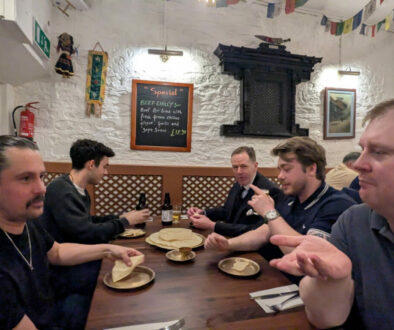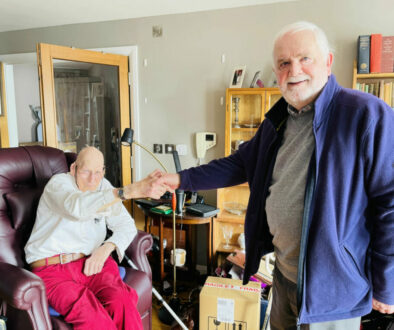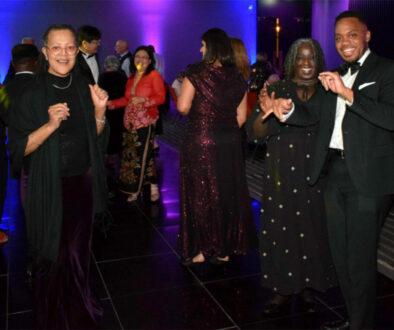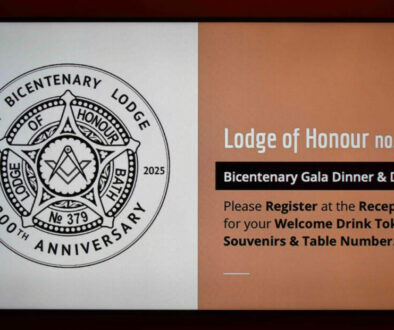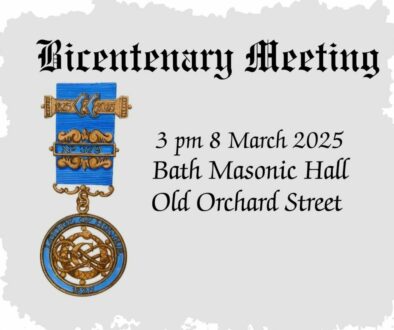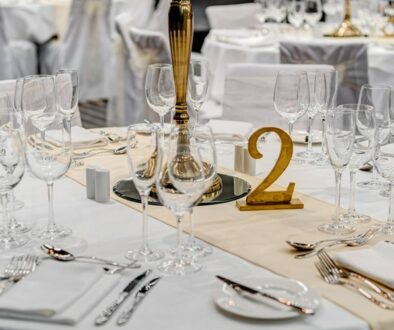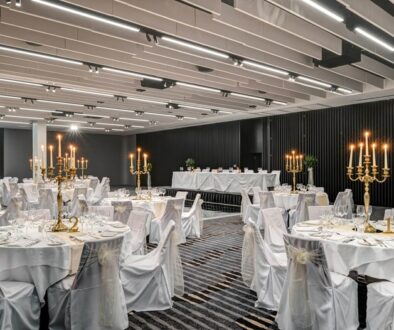The Tracing Boards of the Lodge of Honour Bath
This evening I have been asked to speak about the Lodge of Honour Tracing Boards. Information has been gleaned from the 1991 “History of the Lodge of Honour No. 379” by W. Bro. R.
F. Sanders, the Inaugural Address “Furniture With a History” by W. Bro. A. E. Gayner at Somerset Masters Lodge in 1986 and a talk on “The Tracing Boards of the Lodge of Honour No.
379 Bath” by W. Bro. T. O. Haunch at Somerset Masters Lodge in 1963.Comments on the replacement Third Degree Board are based on my recollections at the time.
The Address by W. Bro. Gayner includes the following lines:-
First, then, the Tracing Boards. It is a matter of deep regret that the set is not now complete: the First and Second Degree boards are with us, but the Third Degree board disappeared some years ago. Some Brethren believe that it might have been destroved in 1942 when the City of Bath was attacked by enemy aircraft for this building suffered severe damage. These striking boards were painted by Arthur Loutherburgh Thiselton who had during his youth been a scene painter in Drury Lane Theatre. The First Degree Board has twice been illustrated in Somerset Masters’ Transactions, and two excellent descriptions have been written by W.Bro. Haunch (1963), and by W.Bro. R. F. Sanders in 1975. These came into the possession of the Lodge in 1825, and are much treasured.
The History of the Lodge of Honour by W. Bro. Bob Sanders includes the following:-
A meeting was held at York House on 24th January 1825 and among those present were Captain Maddison, (ex R.Y .L.), and Colonel Kemys Tynte, (who had been appointed P.G.M. for Somerset in May 1820). A petition was sent to the R. W.P.G.M. for onward transmission to the M.W.G.M. requesting that a new Lodge be formed in Bath entitled “The Tynte Lodge of Honour and Independence“. Of the 17 names on the petition no less than 11 were from the R.Y.L. The petition was granted by the Grand Master, but with some modifications regarding the name. The word “Tynte was removed for the present because of the unmasonic proceedings at Bath “which had unfortunately occasioned so much trouble and wasted so much time” and it was thought that it would be unwise for the P.G.M’s name to be associated with these. Also deleted were the words “and Independence”, Grand Lodge having ruled against any Lodge assuming such a title. The Warrant of the Lodge was issued on 23rd February 1825 under the designation The Lodge of Honour and assigned the number 798.
The Tracing Boards
Three Tracing Boards were painted by Arthur Thistelton, a theatre scene painter at Drury Lane, London. These were inscribed on the reverse with “Tynte Lodge of Honour and Independence“, so it would appear that they were ordered before Grand Lodge had confirmed the name. Two of these boards still remain in use today and, for those who are interested, an article on the Boards appeared in a past copy of the Somerset Masters Transactions. The following are notes I have made after reading the talk given to Somerset Masters’ Lodge in 1963 by W. Bro. T. O. Haunch.
The Tracing Boards are all 6 ft. long and a little under 3 ft wide and were made to stand on the floor near the centre of the Lodge. Most boards in other Lodges are of a much smaller size. I do not intend to describe each Board in great detail but I shall highlight many of the significant features. The Boards probably owe something to the early designs of John Harris, first published as small engravings in 1820. This was the well known Bro. Harris whose later designs were as coloured lithographs to become so widely used during that century.
First Degree Tracing Board
A noteworthy feature and one which seems unique to Thiselton is the application of the four cardinal points of the compass which appear on all of his sets of Boards. The design of the First Degree Board follows what might be called the Masonic chart pattern in that it depicts simply a collection of various objects, ornaments, jewels, etc, associated with the First Degree. His draughtsmanship is good and the three colums of Wisdon, Strength and Beauty are well proportioned.
The Square, Level and Plumb Rule appear as the three Movable Jewels of a Freemasons Lodge, but the Working Tools of the degree are not in evidence, as they are on other First Degree Boards by Thiselton. One item which is unique to this Board by Thistelton is the Trowel resting on the Perfect Ashlar. The Blazing Star in the centre of the board, together with the Mosaic Pavement and the Indented Boarder complete the Ornaments of the Lodge. The Tassels at the corners bear the initials of the Four Cardinal Virtues.
A final notable feature is the introduction of female figures on the three principal rungs of Jacob’s Ladder to personify the virtues of Faith, Hope and Charity. The Second and Third Degree Boards form part of those Ceremonies, but the Lecture on the First Degree Tracing Board is seldom given due to time constraints.
Second Degree Tracing Board
The Second Degree Board is again, basically similar to the 1820 Harris design, representing a single Temple interior scene with a winding staircase, suitably guarded, leading to the Middle Chamber. This board like the First Degree Board has the four cardinal points of the compass shown, but not so clearly as in the First Degree Board. This is unusual on a Second Degree Board.
Another unique feature of this particular Board is the marking of the two Great Pillars with the initials. The whole complex question of the relative position of the porch way pillars and the direction of the winding staircase is not a matter I wish to pursue this evening. On the steps of the staircase appear groups of three, five and seven letters, the initials of the three Grand Masters, the five noble Orders of Architecture and the seven liberal arts and sciences. The irradiated triangle at the top of the Board contains the All Seeing Eye and the Hebrew letter ‘hay’ which is an abbreviation for the name of God.
Third Degree Tracing Board
A replacement Third Degree Tracing Board was made and painted by Bro. Alex “Mick” Mayland and presented to the Lodge in 1998. This Board was dedicated by the Provincial Team in 1999.
Bro. Alex did not say where he gained his information to enable him to produce this board but it does include features which appear on Board designs by John Harris and also those found on the Royal Cumberland Board.
The Emulation Lodge of Improvement sought to bring a measure of standardisation in tracing board design, and organised a competition in 1845, to which many different designs were submitted. Harris himself submitted at least two different sets to the competition, but one of his designs was the winner. Harris revised the designs in 1849, and these “Emulation” tracing boards are today considered a definitive design within British and Commonwealth Freemasonry. I assume that these designs are those which appear in the Emulation Ritual Book in use today. Assuming the John Harris designs were adopted these include the Coffin, Skull and Cross Bones and the working tools with which our Master was slain.
Brethren of the Lodge and Their Contributions
As a final observation on historical aspects of the Lodge of Honour I would like to point out that Bro. Alex Mayland was for many years the Lodge Organist when he added much dignity to our proceedings. Another distinguished Organist of the Lodge was Bro. Ivo Peters who is probably best known for his passionate interest in the old Somerset and Dorset Joint Railway. In March 1934 he, along with W. Bro. Mitchell (D.C.) and W. Bro. Rev. Hereford Simmons visited Emulation Lodge of Instruction in London and there purchased a set of gavels made from the bannisters of the Old F.M. Hall which they presented to the Lodge. They are still in use today by the W.M. and his Wardens.
Bro. Peters also presented a gong which is used in the Third Degree and can be seen here today. He developed cancer in 1980 and passed in 1989. I was Initiated into this Lodge in March 1970 but I have no recollection of Bro. Peters attending the Lodge. Those interested in Bro. Peters should note that the road leading to Sainsbury’s car park in Bath, crossing the original wrought iron railway bridge is named after him and I strongly suggest you see the Channel 4 programme ” Abandoned Railways from Above Series 1 Episode 1 Somerset’, which contains a lot of his cinematographic work.
That concludes my brief presentation this evening, which I hope you may have found interesting.
Prepared by W. Bro M Scaggs in conjunction with the Bicentenary Celebration (see image below) and a presentation on the history of the Lodge of Honour’s original Tracing Board for our February 2025 regular meeting.

